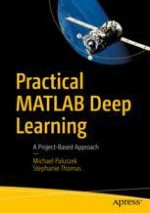
2020 | OriginalPaper | Buchkapitel
1. What Is Deep Learning?
verfasst von : Michael Paluszek, Stephanie Thomas
Erschienen in: Practical MATLAB Deep Learning
Verlag: Apress
Aktivieren Sie unsere intelligente Suche, um passende Fachinhalte oder Patente zu finden.
Wählen Sie Textabschnitte aus um mit Künstlicher Intelligenz passenden Patente zu finden. powered by
Markieren Sie Textabschnitte, um KI-gestützt weitere passende Inhalte zu finden. powered by